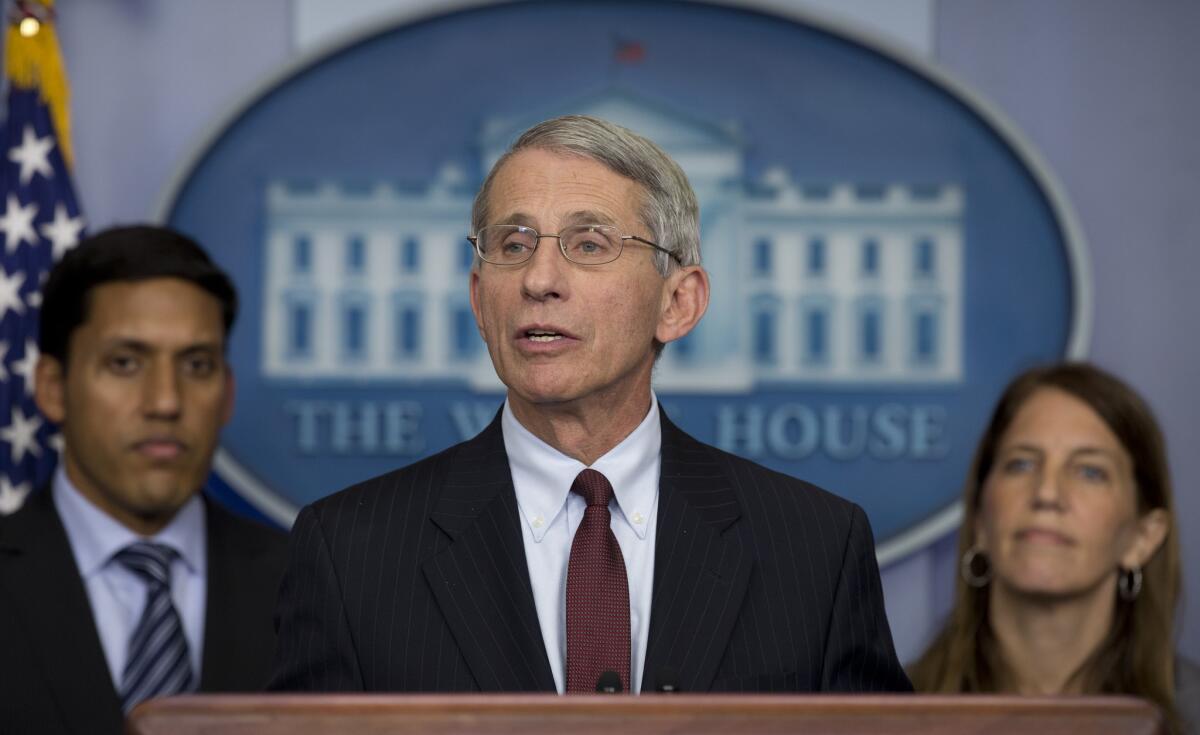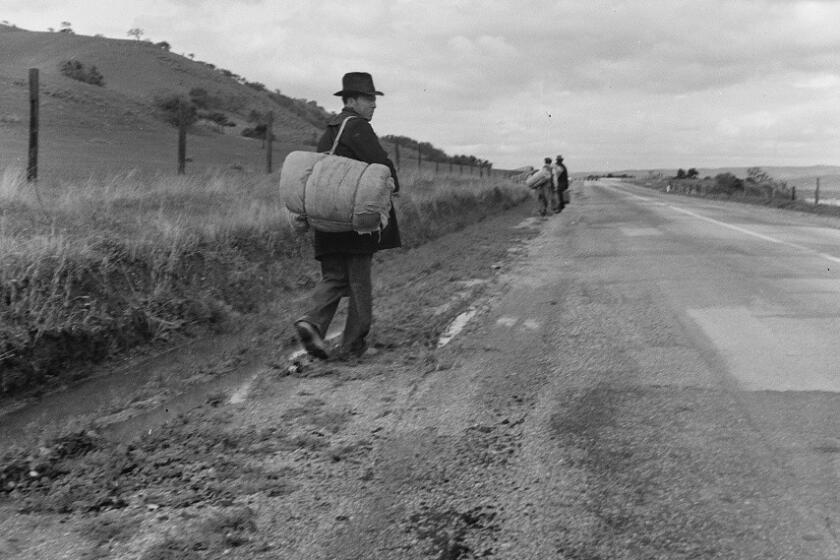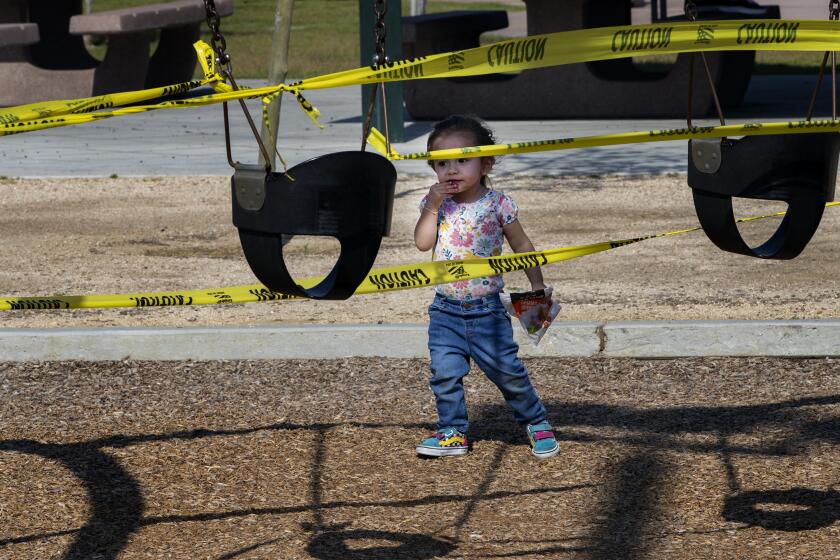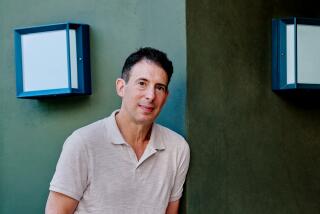‘Quarantini.’ ‘Doomscrolling.’ Here’s how the coronavirus is changing the way we talk

On Feb. 11, in Geneva, the head of the World Health Organization unveiled the name of a new disease.
“I’ll spell it,” the director-general, Tedros Adhanom Ghebreyesus, said: “C-O-V-I-D hyphen one nine.”
It was a portmanteau, a mash-up of coronavirus disease 2019, and it landed just over a month later in Merriam-Webster’s online dictionary, the fastest journey from conception to formal recognition in the company’s nearly 200-year history.
COVID-19 has sickened nearly 2 million people globally and yielded a death toll surpassing 125,000. It has cratered the economy and turned much of the world into a collection of reluctant shut-ins.
It has also transformed and expanded the vocabulary of our daily lives.
Words like asymptomatic and droplets and super-spreader have become a part of regular conversation, along with terms such as red zone, social distancing and flattening the curve. Suddenly we’re all epidemiological savants.
Disruptive events like the COVID-19 outbreak can end political inertia and result in bold changes
“Zoonosis is a word that if you once played in Scrabble you were some kind of genius,” said John Kelly, senior research editor at Dictionary.com, another online repository of definitions.
“Now,” he said, “we’re all familiar that it means spreading from an animal to a human,” the path the novel coronavirus may have traveled.
It’s not just scientific and medical terms, such as pathogen and incubation period, that sprang from niche use to wide currency. A whole slew of neologisms — newly coined words and expressions — such as quarantini, zoombombing and coronnial has been spawned, taking some of the edge off our angst, or at least helping raise a smile.
(Quarantini, a mash-up of quarantine and martini, describes one palliative for the housebound; zoombombing is the harassing intrusion into a private video conference; coronnials are the coming generation conceived during all that time spent sheltering in place.)
If language is a tool, as Peter Sokolowski, Merriam-Webster’s editor-at-large, suggested, it is one wielded with great dexterity and purpose.
The words that are used during the pandemic inform and help keep us safe.
We know that socially distancing by staying at least six feet apart helps avoid the spread of coronavirus by limiting our exposure to aerosolized droplets, which is to say — less decorously — spit flying through the air when we talk or cough.
We know that steering clear of hot spots and red zones, areas with a heavy concentration of COVID-19 cases, can flatten the curve, slowing the spread of the disease and helping doctors and nurses avoid a sudden overload of patients.
While much about the novel coronavirus remains a riddle, the verbal chain of transmission is easily traced. Words that, as Kelly put it, are the “bread-and-butter vocabulary” of healthcare experts are uttered in public settings, picked up by politicians, public safety officials and the media, then pass into general circulation.
‘Zoonosis is a word that if you once played in Scrabble you were some kind of genius.’
— John Kelly, senior research editor at Dictionary.com
Beyond their utilitarian function — to alert and inform — words can also offer a measure of comfort, the oft-repeated phrases and winking expressions like quarantini and covidiot (the pandemic equivalent of a flat-earther) creating a common dialect suggesting we’re all in this crisis together.
“People are casting about for ways to talk about this unprecedented thing that’s happening and it’s a shared experience,” said Nancy Friedman, who runs a branding consultancy in the San Francisco Bay Area and writes frequently about words and their application. “We’re groping for the right language.”
Josef Essberger, founder of EnglishClub.com, agreed.
He created a COVID-19-related vocabulary page for his website for those just learning English, as well as their instructors, knowing they would be asking amid the flood of pandemic-related verbiage “what these newly encountered words meant.”
Essberger called it “language in the making.”
These are some of the unusual new scenes across the Southland during the coronavirus outbreak.
Each day brings further entries into the popular lexicon: ventilator, community spread, doomscrolling. (The latter is slang for an excessive amount of screen time devoted to the absorption of dystopian news.)
Unsettling as they may be, these are boom times for lovers of language, who have filled the internet and social media with COVID-19 glossaries, etymological treatises, collections of neologisms and histories of old words that have grown newly topical. (Shakespeare used “droplets” in his tragic play “Timon of Athens,” which is believed to have been written sometime around 1605.)
But it’s not just word nerds who’ve grown obsessed.
Sokolowski said big news events — such as Sept. 11, the death of Michael Jackson, the Boston Marathon bombing — typically lead to a flood of people looking up certain related words or phrases on Merriam-Webster.com. Throughout March, the top 50 most searched-for definitions on the website were COVID-19-related.
“We’ve never seen anything like it,” said Sokolowski, who has been keeping track for nearly two decades.
Apart from curiosity, he thinks the search for meaning may have something to do with perceptions of the dictionary as an honest arbiter, its prescriptive passages offering impartiality in this age of “alternative facts” and denunciations of so-called fake news.
“The real job of a dictionary is tell the truth about a word,” Sokolowski said, sheltering in place at his home in the Massachusetts countryside. “Not to judge them and say this is a good word or a bad word.”
The coronavirus changed our lives. Health experts discuss how we might get back to normal.
Which is not to say the changes to our daily discourse are without controversy.
Some have objected to the use of social distancing, a term borrowed from sociology and used to describe separation along class, racial and gender lines, fearing it may be misconstrued. The World Health Organization, among other public health agencies, has adopted “physical distancing” as its preferred nomenclature because, as epidemiologist Maria Van Kerkhove told reporters, “We want people to still remain connected.”
So far, however, that wording has not widely caught on with the public, which for the most part remains socially distanced.
What is a mystery at this point, much like the disease itself, is whether words associated with the coronavirus and COVID-19 will remain extant once the pandemic runs its course.
During the AIDS epidemic, we came to understand the importance of T cells and their role fighting disease, though we hear less about that now. For a time many Americans were conversant in O-rings, the sealant that failed with tragic consequences when the space shuttle Challenger blew up in 1986. Today, the word rarely comes up outside specialized fields.
“The kinds of words that stick around are the kinds of words we’ll still have reason to use in five years because of the way society has changed or the way technology has moved forward,” said Kory Stamper, a lexicographer — that’s someone who writes dictionaries — outside Philadelphia.
One thing seems certain.
Since 2003, Merriam-Webster has proclaimed a “Word of the Year,” an honor based partly on the number of times a word or expression has been looked up online and how that frequency compares to the previous year. Past honorees include blog (2004), bailout (2008) and austerity (2010).
Asked if this year’s winner would be COVID-19-related, Sokolowski responded with two words: “No question.”
More to Read
Sign up for Essential California
The most important California stories and recommendations in your inbox every morning.
You may occasionally receive promotional content from the Los Angeles Times.












